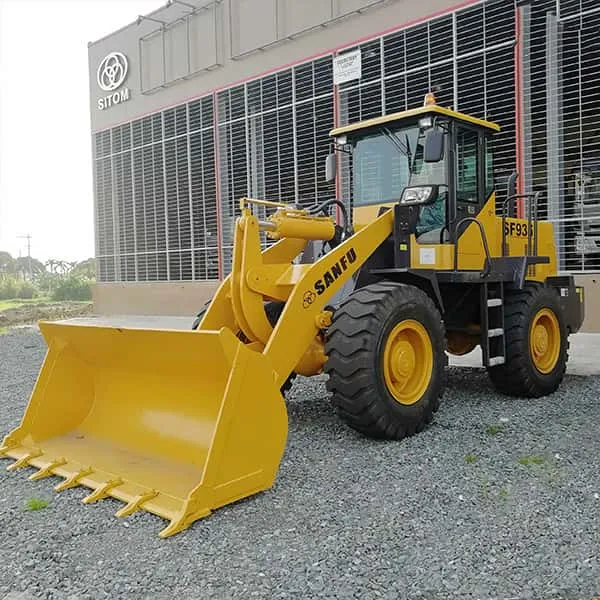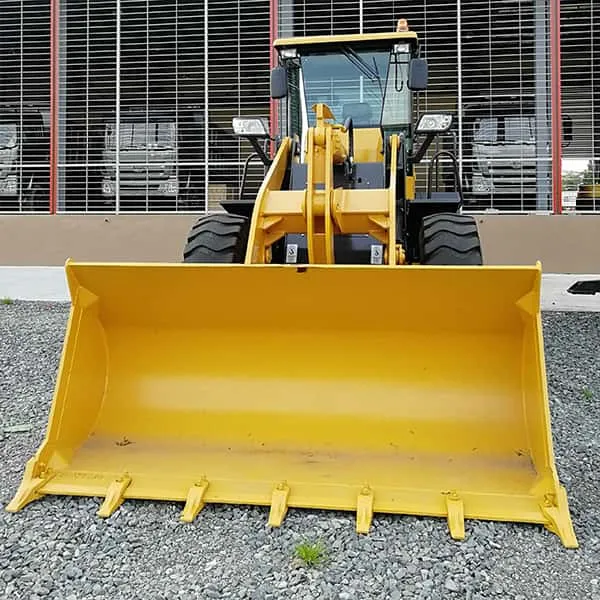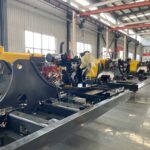Introduction
Big wheel loaders have become indispensable tools for infrastructure development projects around the world. With their large wheels, powerful engines, and versatile bucket attachments, these machines are able to move massive amounts of dirt and materials efficiently. Whether it’s building new roads, expanding rail lines, or developing housing and commercial areas, big wheel loaders play a crucial role in shaping our modern world.
In this blog post, we will explore the key functions ofwheel loaders and how they help drive progress on infrastructure projects. We’ll look at common applications, specifications to consider when choosing a model, and address some frequently asked questions about maintenance and operation. By understanding the capabilities of these machines, we can gain a greater appreciation for their contributions to building the foundations of our communities.
Versatility in Big wheel loader action

One of the major advantages of big wheel loaders is their versatility. With the right bucket attachment, these machines can take on a wide variety of tasks from excavating and grading to loading trucks.
Some common applications include:
| Application | Description |
|---|---|
| Site Preparation | Clearing, digging, and moving material to prepare construction areas |
| Earthmoving | Excavating trenches and foundations, relocating soil/rock during grading |
| Loading Trucks | Filling dump trucks, haulers, and other vehicles to remove excavated material |
| Stockpiling | Stacking excavated material, aggregates, or other resources in designated areas |
| Snow Removal | Pushing and loading snow during winter storms to clear roads/parking lots |
This versatility allows a single big wheel loader to take on multiple roles and boost efficiency on job sites. Contractors save costs by using one machine for different tasks rather than needing separate specialized equipment.
Choosing the Right Model
With various manufacturers and multiple model options available, selecting the appropriate big wheel loader is an important decision. Key specifications to consider include:
- Operating Weight: Heavier machines (50,000+ lbs) can handle larger loads but require more powerful engines. Lighter models work well for residential projects.
- Bucket Size: Ranges from 1-5 cubic yards depending on intended applications. Larger buckets move more material per load.
- Horsepower: More powerful engines (300+ hp) are needed to lift and move heavier loads efficiently. Consider the terrain and job demands.
- Tire Size: Larger wheels provide better traction and stability, especially important for earthmoving in muddy or uneven conditions.
- Attachments: Consider quick couplers that allow fast changes between buckets and forks for versatility.
Choosing the right size and configuration maximizes productivity while suiting budget and job site needs. Rental companies can offer demo units to test different models.
Benefits of Big Wheel Loaders

There are a number of benefits to using wheel loaders in infrastructure development projects. These include:
- Increased efficiency: wheel loaders can move large quantities of material quickly and easily, which can help to reduce the time and cost of construction projects.
- Improved productivity: wheel loaders can help to improve the productivity of construction workers by automating many of the tasks involved in material handling.
- Reduced environmental impact: wheel loaders can help to reduce the environmental impact of construction projects by minimizing the amount of waste and emissions generated.
- Enhanced safety: Big wheel loaders can help to improve the safety of construction workers by providing a safe and stable work environment.
Types of Wheel Loaders
There are a number of different types of big wheel loaders available, each with its own unique set of features and capabilities. The most common types of big wheel loaders include:
- Articulated wheel loaders: Articulated wheel loaders are the most common type of big wheel loader. They are equipped with a hinge in the middle of the frame, which allows them to turn tightly and maneuver easily in confined spaces.
- Rigid frame wheel loaders: Rigid frame wheel loaders are less common than articulated wheel loaders, but they offer a number of advantages, including greater stability and lifting capacity.
- Telehandlers: Telehandlers are a type of big wheel loader that is equipped with a telescopic boom. This allows them to reach high places and lift heavy loads.
Conclusion
As this blog post has highlighted, big wheel loaders play a critical role in developing modern infrastructure through their versatility and ability to efficiently move massive amounts of material. From site preparation to earthmoving to loading trucks, these machines are workhorses that drive progress on construction projects building roads, rail lines, utilities, and more. With the right model selection and maintenance practices, contractors can maximize uptime and productivity. Big wheel loaders will continue to be indispensable tools supporting infrastructure development for years to come.
FAQs
What are big wheel loaders, and how do they differ from other types of loaders?
- Big wheel loaders are heavy equipment machines equipped with large buckets mounted on the front, primarily used for loading and transporting materials on construction sites and in mining operations. Unlike smaller loaders, big wheel loaders are designed to handle larger loads and operate in more demanding conditions.
What are the primary functions of big wheel loaders on construction sites?
- Big wheel loaders perform various tasks on construction sites, including loading and transporting materials such as gravel, sand, and debris, as well as leveling and grading surfaces. They are essential for efficient material handling and earthmoving operations.
How do big wheel loaders contribute to improving efficiency in infrastructure development projects?
- Big wheel loaders enhance efficiency on construction sites by their large load-carrying capacity, fast travel speeds, and quick cycle times. They can handle heavy loads with ease, reducing the time and labor required for material handling tasks and ultimately accelerating project progress.
In what types of infrastructure development projects are big wheel loaders commonly used?
- Big wheel loaders are utilized in various infrastructure development projects, including road construction, building construction, mining operations, and quarrying activities. They play a vital role in loading, hauling, and stockpiling materials essential for these projects.
What are some key features to consider when selecting a big wheel loader for infrastructure development?
- When selecting a big wheel loader, factors to consider include engine power, bucket capacity, operating weight, maneuverability, operator comfort, fuel efficiency, and emission control technologies. Choosing the right-sized loader with appropriate features ensures optimal performance and productivity on the job site.







-150x150.webp)
